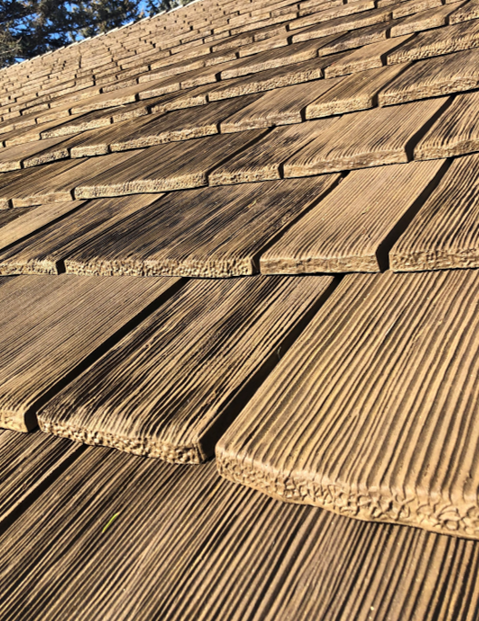Important Questions to Ask Gainesville Roofing Companies Before Hiring
Important Questions to Ask Gainesville Roofing Companies Before Hiring
Blog Article
Best Practices for Ensuring Correct Roof Air Flow
A well balanced intake and exhaust vent proportion, generally 1:300, plays a pivotal duty, with intake vents ideally placed at the reduced side of the roof covering for great air access and exhaust vents at the top for cozy air leave. Maintaining insulation away from vents is essential to avoid airflow limitation.
Understand Ventilation Basics
Properly understanding air flow fundamentals is vital for making certain the longevity and efficiency of roofing systems. Reliable air flow minimizes moisture buildup and temperature level extremes in the attic, both of which can cause substantial architectural damage in time. A well-ventilated roofing system helps in preventing typical problems such as mold and mildew development, timber rot, and ice dams, which can jeopardize the integrity of the roof products and the underlying structures.
The main goal of ventilation is to promote the activity of air, enabling for a regular exchange in between the indoor and outdoor environments. This equilibrium is accomplished via a combination of intake and exhaust vents that function with each other to preserve optimal air flow. Consumption vents, typically located along the soffits or eaves, allow fresh air to go into the attic space, while exhaust vents, typically situated at or near the roofing ridge, make it possible for hot, damp air to run away.
Trick factors influencing the effectiveness of roof covering air flow consist of correct placement, adequate sizing, and making sure that both intake and exhaust vents are unobstructed. Routine assessment and maintenance are critical to identify possible obstructions, damages, or inefficiencies in the air flow system, thus guarding the roof's efficiency and sturdiness.
Types of Roof Vents
Roof covering vents play a vital duty in keeping efficient attic room ventilation and, by expansion, the general health and wellness of the roof. Various sorts of roof vents are available, each with special benefits tailored to particular roof covering needs. Ridge vents, as an example, are installed along the roofing's peak, enabling warm, moist air to leave from the attic. They offer constant ventilation and blend perfectly with the roofline, making them both reliable and cosmetically pleasing.

Soffit vents are installed under the eaves and operate in tandem with roof covering vents to guarantee a well balanced consumption and exhaust system. By enabling cooler air to get in from below, soffit vents promote the expulsion of warm air through top vents. Gable vents, situated on the exterior walls of the attic room, offer one more reliable option, especially in homes with saddleback roofs.
Examine Your Current Ventilation

Following, think about the age and condition of your roof materials and air flow parts. Older systems might not follow existing building regulations or might have deteriorated over time, decreasing their performance. Conduct a detailed evaluation to determine any kind of indications of damage, such as corrosion, damage, or voids that might jeopardize the system's performance.
Furthermore, measure the attic temperature level and humidity degrees. Heats and humidity can suggest insufficient ventilation - roofing companies gainesville florida. Use a hygrometer and thermometer to obtain precise analyses, comparing them with exterior conditions. Consistent disparities recommend potential issues that need addressing.
Setup Best Practices
Efficient setup of roof covering ventilation systems is extremely important for making certain optimal performance and longevity. Proper installation begins with understanding the specific ventilation needs of the roofing and the structure it covers. This includes computing the proper ratio of consumption to wear down vents, generally sticking to the 1:300 guideline, which states one square foot of air flow for each 300 square feet of attic room flooring room.

The placement of vents is similarly critical. Consumption vents should be set up at the roof's reduced side, typically in the soffits, to allow awesome air to get in. Exhaust vents, on the other hand, must be installed near or at the roofing's peak to assist in the leave of warm, damp air. This develops a natural air flow that aids maintain temperature level and dampness balance within the attic room room.
Seal all vent links diligently to stop air leaks and prospective water seepage. Use premium products and adhere to supplier guidelines to ensure sturdiness and efficiency. In addition, incorporating ridge vents with baffles can dramatically boost airflow efficiency by avoiding wind-driven rainfall and snow from getting in the attic room.
Ultimately, specific installment of roof covering air flow systems reduces possible concerns such as mold and mildew growth, ice dams, and architectural damage, making sure the roofing's stability and the building's total wellness.
Normal Upkeep Tips
Uniformity in maintenance techniques is essential to ensuring the lasting performance of roof covering ventilation this systems. Regular inspections are crucial, preferably done biannually-- in the spring and fall. Throughout these examinations, make certain that vents are complimentary of debris, nests, and other blockages that might impede air movement. Inspect for any type of signs of dampness buildup or mold, as these can indicate inappropriate ventilation or leaks (roofing companies in gainesville florida).
Utilize a soft brush or a vacuum cleaner to get rid of dust and debris from consumption and exhaust vents. Be cautious not to harm the vent displays or louvers during the procedure.
Appropriate insulation is similarly vital. Make certain that helpful hints attic room insulation does not obstruct the vents, as this can seriously restrict airflow. If any insulation has moved or worked out, rearrange or change it to maintain an efficient barrier.
Lastly, change any damaged or missing components immediately. Broken vents, cracked roof shingles, or worn-out flashing can all contribute to inadequate ventilation and should be resolved immediately. Regular upkeep guarantees that the roof ventilation system functions ideally, consequently expanding the life-span of the roofing system itself.
Verdict
Making certain appropriate roofing ventilation is critical for maintaining the efficiency and durability of a roof system. Adherence to the 1:300 intake and exhaust air vent ratio, combined with the strategic placement of vents, is essential.
A well balanced consumption and exhaust vent proportion, frequently 1:300, plays an essential role, with consumption vents preferably put at the lower edge of the roof covering for trendy air entry and exhaust vents at the top for cozy air leave. Consumption vents, generally located along the soffits or eaves, permit fresh air to get in the attic room space, while exhaust vents, typically positioned at or near the roof covering ridge, enable warm, damp air to escape.
Soffit vents are mounted under the eaves and work in tandem with roof vents to make sure a well balanced intake and exhaust system. By allowing cooler air to get in from below, soffit vents facilitate the expulsion of Website hot air through top vents. Adherence to the 1:300 consumption and exhaust air vent ratio, combined with the strategic positioning of vents, is important.
Report this page